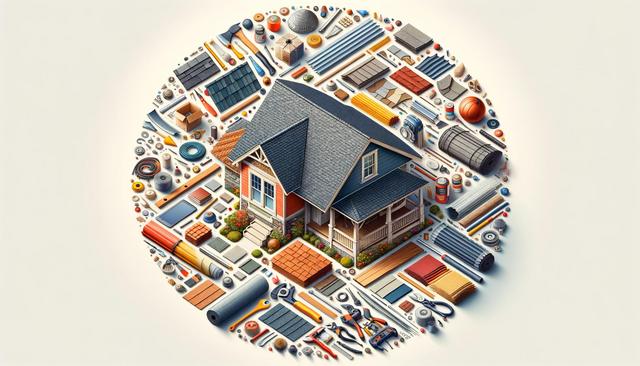Factors That Influence Roofing Costs
The price of roofing can vary significantly depending on several key factors. Homeowners often find that the final cost of a roof installation or replacement goes beyond the cost of materials alone. Labor rates, roof size, pitch (steepness), and local building codes all contribute to the overall expense. Additionally, the complexity of the roof design—such as the number of chimneys, skylights, or dormers—can increase installation time and costs.
Material choice is one of the most influential aspects of roof pricing. Common options include asphalt shingles, metal panels, wood shakes, clay tiles, and synthetic materials. Each comes with its own price range and lifespan, making it crucial to align your choice with both your budget and long-term goals. For instance, asphalt shingles are generally more affordable upfront but may need replacement sooner than other materials.
Here are some typical factors that affect roofing prices:
- Roof size (measured in squares, where 1 square = 100 sq. ft.)
- Type of roofing material selected
- Labor costs in your region
- Removal and disposal of the old roof
- Additional features like vents, skylights, or chimneys
Getting multiple quotes from reputable contractors can help you gauge a fair price for your specific project and avoid unexpected expenses.
Average Roofing Price Ranges
While prices vary based on location and other variables, it’s helpful to understand average ranges to set realistic expectations. For a standard single-family home, roofing costs can range widely depending on the material and labor involved. Asphalt shingles, one of the most widely used materials, often fall in the lower price range. On the other hand, metal, tile, and slate roofs usually come with higher initial costs due to material quality and installation complexity.
Here’s a general breakdown of the average cost per square foot for various roofing materials:
- Asphalt shingles: $3 to $5 per sq. ft.
- Metal roofing: $6 to $12 per sq. ft.
- Clay or concrete tiles: $10 to $18 per sq. ft.
- Slate: $15 to $25 per sq. ft.
Keep in mind that these figures usually include both materials and labor. However, local market conditions and contractor availability can influence these averages. It’s also important to consider potential additional charges, such as structural repairs or permit fees, when estimating your total cost.
Cost-Saving Tips Without Compromising Quality
Roofing can be a significant investment, but there are ways to manage costs effectively without sacrificing quality. One approach is to schedule your roofing project during the off-season, typically late fall or early spring, when contractors might offer more competitive rates due to lower demand. Additionally, consider bundling roof repair with other exterior renovations to potentially reduce labor costs through combined services.
Another cost-saving strategy is to explore financing options or home improvement loans that can spread payments over time. Some roofing contractors also offer financing plans, allowing homeowners to pay in installments rather than a lump sum.
Here are a few practical tips to save on roofing costs:
- Get at least three quotes to compare pricing and services
- Check for manufacturer or contractor rebates
- Opt for materials with a good balance of cost and durability
- Ensure proper insulation to extend roof life and reduce energy bills
Making informed decisions and planning ahead can help you stay within budget while still achieving a reliable and long-lasting roof.
Hidden Costs and Additional Considerations
When budgeting for a new roof, it’s important to account for potential hidden costs. These may include removing old roofing layers, repairing underlying structures like decking or flashing, and addressing water damage that may not be visible until work begins. If your home requires structural changes to meet local building codes, this can also increase total expenses.
Permits and inspections are often required for roofing projects, and fees can vary by municipality. Some homes may also need upgrades to meet modern energy efficiency standards, especially if the original roof was installed decades ago. These upgrades can include improved ventilation systems or reflective coatings that help with temperature regulation.
Be aware of these common hidden expenses:
- Decking replacement for deteriorated wood
- Permits and inspection fees
- Mold or pest damage remediation
- Unexpected structural repairs
By discussing these possibilities with your contractor before work begins, you can better prepare for potential budget adjustments and avoid surprises.
Choosing the Right Roofing Contractor
Finding a trustworthy and skilled contractor is a key part of ensuring that your roofing project is successful and cost-effective. A well-regarded contractor can provide accurate estimates, high-quality workmanship, and warranties that protect your investment. Look for contractors with strong online reviews, verifiable credentials, and detailed written proposals.
Always ask for references and check whether the contractor is licensed and insured. Insurance is especially important, as it protects both you and the workers in case of accidents or property damage during the project.
When evaluating potential contractors, consider the following:
- Experience with your chosen roofing material
- Proof of licensing and insurance
- Warranty coverage on labor and materials
- Clear communication and transparent pricing
Choosing the right professional not only helps ensure a smooth project but also contributes to the longevity and performance of your roof over time.


